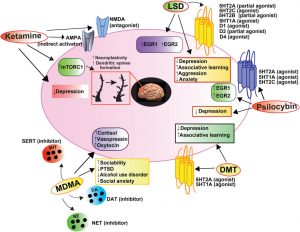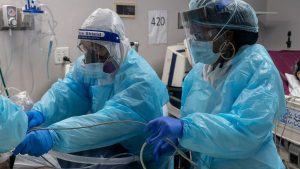Relieve Insomnia in Older Adults with Tai Chi or Exercise
By John M. de Castro, Ph.D.
“Tai Chi significantly improved sleep quality in both healthy adults and patients with chronic health conditions, which suggests that Tai Chi may be considered as an alternative behavioral therapy in the treatment of insomnia.” – Gown Raman
Modern society has become more around-the-clock and more complex producing considerable pressure and stress on the individual. The advent of the internet and smart phones has exacerbated the problem. The resultant stress can impair sleep. Indeed, it is estimated that over half of Americans sleep too little due to stress. As a result, people today sleep 20% less than they did 100 years ago. Not having a good night’s sleep has adverse effects upon the individual’s health, well-being, and happiness. It has been estimated that 30 to 35% of adults have brief symptoms of insomnia, 15 to 20% have a short-term insomnia disorder, and 10% have chronic insomnia
Insomnia is more than just an irritant. Sleep deprivation is associated with decreased alertness and a consequent reduction in performance of even simple tasks, decreased quality of life, increased difficulties with memory and problem solving, increased likelihood of accidental injury including automobile accidents, and increased risk of dementia and Alzheimer’s disease. It also can lead to anxiety about sleep itself. This is stressful and can produce even more anxiety about being able to sleep. About 4% of Americans revert to sleeping pills. But these do not always produce high quality sleep and can have problematic side effects. So, there is a need to find better methods to treat insomnia. Mindfulness-based practices have been reported to improve sleep amount and quality and help with insomnia.
Tai Chi is an ancient mindfulness practice involving slow prescribed movements. It is gentle and completely safe, can be used with the elderly and sickly, is inexpensive to administer, can be performed in groups or alone, at home or in a facility or even public park, and can be quickly learned. In addition, it can also be practiced in social groups without professional supervision. This can make it fun, improving the likelihood of long-term engagement in the practice. Indeed, studies have shown that Tai Chi practice is effective in improving sleep. But Tai Chi is both a mindfulness practice and an exercise. It is unclear whether its effects on insomnia are due to the exercise provided or the mindfulness practice.
In today’s Research News article “). Effects of Tai Chi or Exercise on Sleep in Older Adults With Insomnia: A Randomized Clinical Trial.” (See summary below or view the full text of the study at: ) Siu and colleagues recruited older sedentary adults over 60 years of age who were diagnosed with chronic insomnia and randomly assigned them to receive either treatment as usual, or 12 weeks of 3 weekly 1-hour sessions of exercise, or Tai Chi practice. Exercise consisted of brisk walking and muscle strengthening. Tai Chi practice consisted of the 24 form Yang style Tai Chi. They were measured before and after treatment and 24 months later for objective sleep quality with actigraphy and subjectively for remission of insomnia, insomnia treatment response, perceived sleep quality, insomnia severity, self-reported sleep parameters, and the use of hypnotic medication.
They found that in comparison to baseline and the usual care group, the actigraphy and Tai Chi groups had significant improvements in objective sleep measures of sleep efficiency, sleep onset, wake time after sleep onset, and number of awakenings, and subjective measures of remission of insomnia, perceived sleep quality, insomnia severity, and lower use of hypnotic medications. Importantly, these improvements were still present 2 years later.
Hence, both objective and subjective measures of sleep revealed that both exercise and Tai Chi practice produced moderate significant and enduring improvements in sleep in older adults with insomnia. The fact that exercise and Tai Chi practice produced equivalent benefits suggests that the ability of Tai Chi practice to improve sleep is due to the exercise provided by the practice and not to the mindfulness aspects of the practice.
So, relieve insomnia in older adults with tai chi or exercise.
“TCC [Tai Chi Chih] produce clinically meaningful improvements in insomnia.” – Michael Irwin
CMCS – Center for Mindfulness and Contemplative Studies
This and other Contemplative Studies posts are also available on Google+ https://plus.google.com/106784388191201299496/posts and on Twitter @MindfulResearch
Study Summary
Siu, P. M., Yu, A. P., Tam, B. T., Chin, E. C., Yu, D. S., Chung, K. F., Hui, S. S., Woo, J., Fong, D. Y., Lee, P. H., Wei, G. X., & Irwin, M. R. (2021). Effects of Tai Chi or Exercise on Sleep in Older Adults With Insomnia: A Randomized Clinical Trial. JAMA network open, 4(2), e2037199. https://doi.org/10.1001/jamanetworkopen.2020.37199
Key Points
Question
Can tai chi improve sleep as effectively as conventional exercise in older adults with insomnia?
Findings
In this randomized clinical trial using data collected from 320 older adults, both tai chi and conventional exercise were associated with improved sleep. Both interventions were equally effective in improving various actigraphy-assessed sleep parameters, and these beneficial effects remained persistent 24 months after the intervention with no significant differences between the 2 intervention groups.
Meaning
Given that tai chi is an accepted form of physical activity among older people because of its gentle, low-impact exercises, it can represent an alternative approach to fulfill the physical activity recommendations for improving sleep for individuals who are averse to conventional exercise.
Abstract
Importance
Previous studies that have shown tai chi to improve sleep were mainly based on subjective assessments, which might have produced results confounded by self-reporting bias.
Objective
To compare the effectiveness of tai chi for improving sleep in older adults with insomnia with conventional exercise and a passive control group using actigraphy-based objective measurements.
Design, Setting, and Participants
This randomized, 3-arm, parallel group, assessor-masked clinical trial was conducted at a single research unit in Hong Kong between August 2014 and August 2018. Eligible participants, aged 60 years or older and with chronic insomnia, were randomly allocated into tai chi training, exercise, and control groups.
Interventions
12-week tai chi training, 12-week conventional exercise, and no intervention control.
Main Outcomes and Measures
Primary outcomes were measures taken from actigraphy sleep assessment. Secondary outcomes included remission of insomnia, insomnia treatment response, Pittsburgh Sleep Quality Index score, Insomnia Severity Index score, and self-reported sleep using a 7-day sleep diary. Assessments were performed at baseline, end of the intervention (postintervention), and 24 months after the intervention (follow-up). Data analysis was performed from September 2018 to August 2020.
Results
A total of 320 participants (mean [SD] age, 67.3 [6.8] years; mean [SD] insomnia duration, 124.4 [134.5] months; 256 [80.0%] women) were randomly allocated into control (110 participants), exercise (105 participants), and tai chi (105 participants) groups and included in the data analysis. Compared with the control group, the exercise and tai chi groups showed improved sleep efficiency (exercise vs control: adjusted mean difference, +3.5%; 95% CI, 1.8-5.2; P < .001; tai chi vs control: adjusted mean difference, +3.4%; 95% CI, 1.6-5.1; P < .001) and reductions of wake time after sleep onset (exercise vs control: −17.0 minutes; 95% CI, −24.9 to −9.0; P < .001; tai chi vs control: −13.3 minutes; 95% CI, −21.3 to −5.2; P = .001) and number of awakenings (exercise vs control: −2.8 times; 95% CI, −4.0 to −1.6; P < .001; tai chi vs control: −2.2 times; 95% CI, −3.5 to −1.0; P < .001) as assessed by actigraphy at postintervention; although there were no significant differences between the exercise and tai chi groups. The actigraphy-assessed beneficial effects were maintained in both intervention groups at follow-up.
Conclusions and Relevance
Conventional exercise and tai chi improved sleep and the beneficial effects sustained for 24 months, although the absolute improvements in sleep parameters were modest. Improvements in objective sleep parameters were not different between the tai chi and exercise groups, suggesting that tai chi can be an alternative approach for managing insomnia.
https://www.ncbi.nlm.nih.gov/pmc/articles/PMC7885034/









